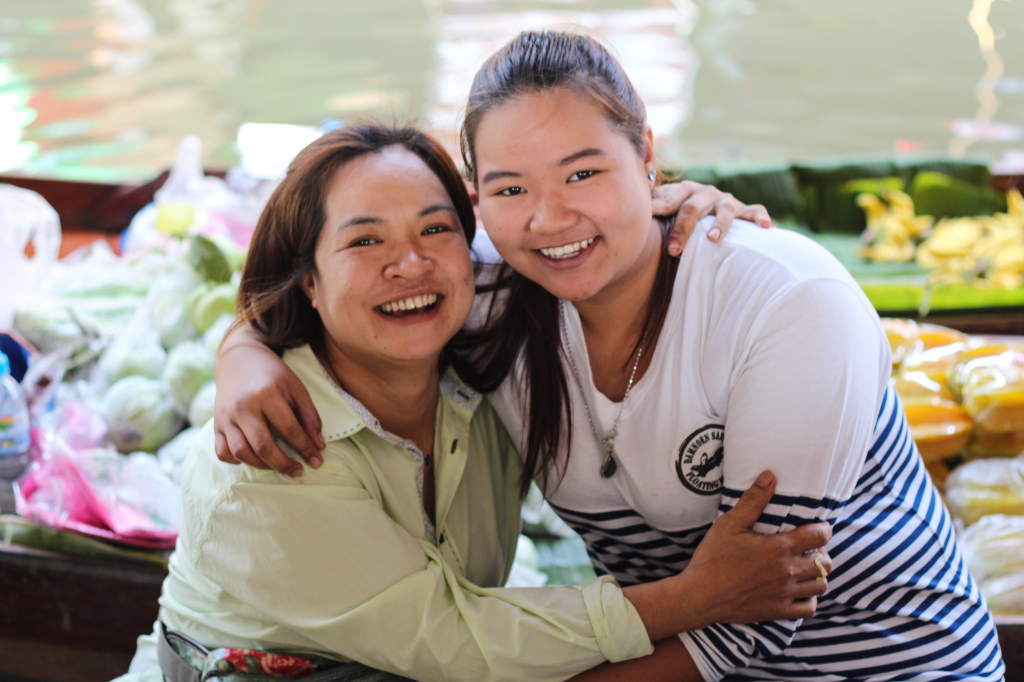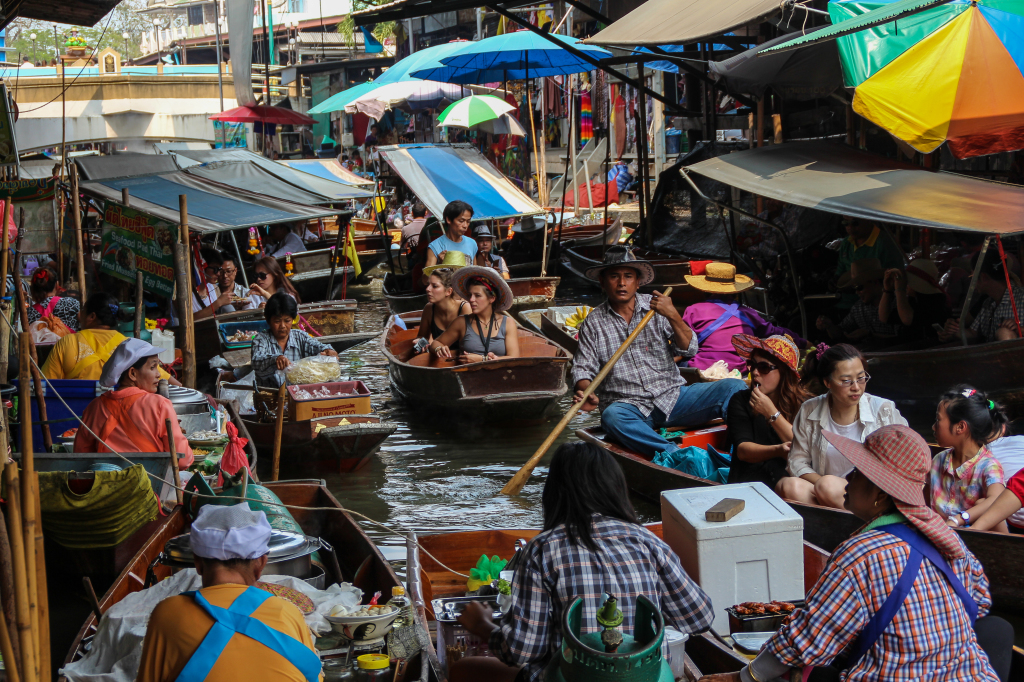
RAJBURI, THAILAND: It’s 9:00 am on Sunday, Feb. 1, and the Domnoen Saduak canal is bustling with activity. Dozens of women paddle wooden long tail boats, heavy with colorful local fruits through the murky water, carefully weaving between oncoming motorboats filled with tourists. Additional boats serve as floating kitchens, a one-man show of paddling, slicing, chopping, and frying. The air is thick with the smell of grilled meat, pad thai, spring rolls, and fresh fruit.
The Domnoen Saduak Floating Market takes place daily in Ratchaburi Province, approximately 100 km southwest of Bangkok, beginning as early as 8:00 am, and ending around 12:00 pm. Here, locals continue the ancient tradition of produce sales from their wooden paddleboats, as well as many other crafts, foods, and souvenirs targeted at the modern, tourist market.
An Ancient Tradition
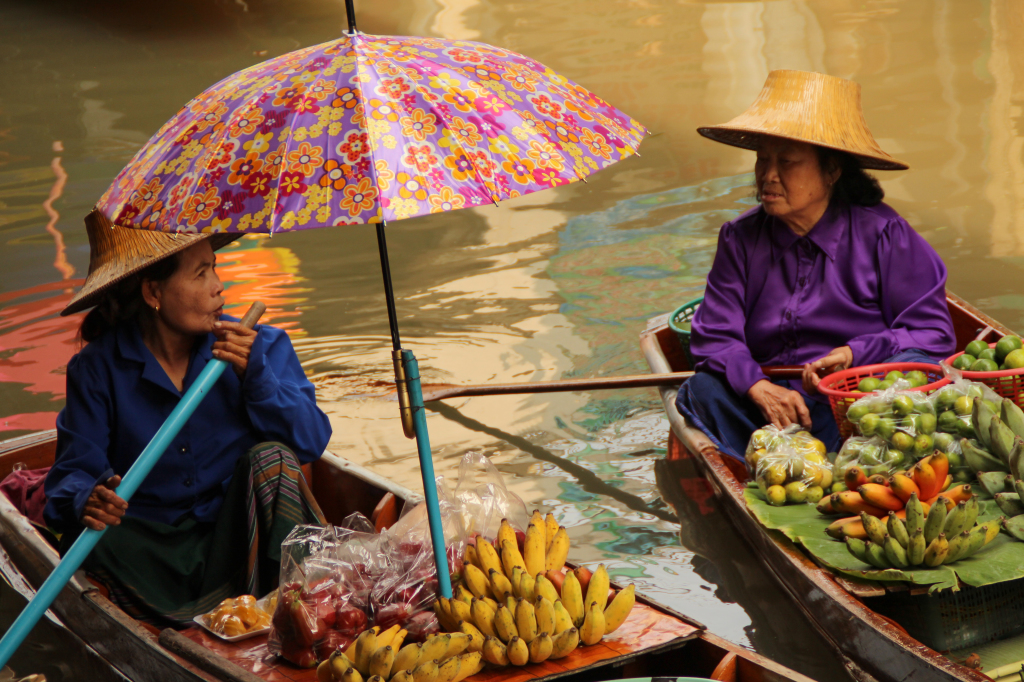
Phui is among the older vendors here, and has witnessed great changes in the market throughout her 61 years of attendance. With the help of a translator, she describes the dramatic increase of commercial business along the canals. When she first started working here at the age of13, the market simply consisted of farmers in their boats selling produce.
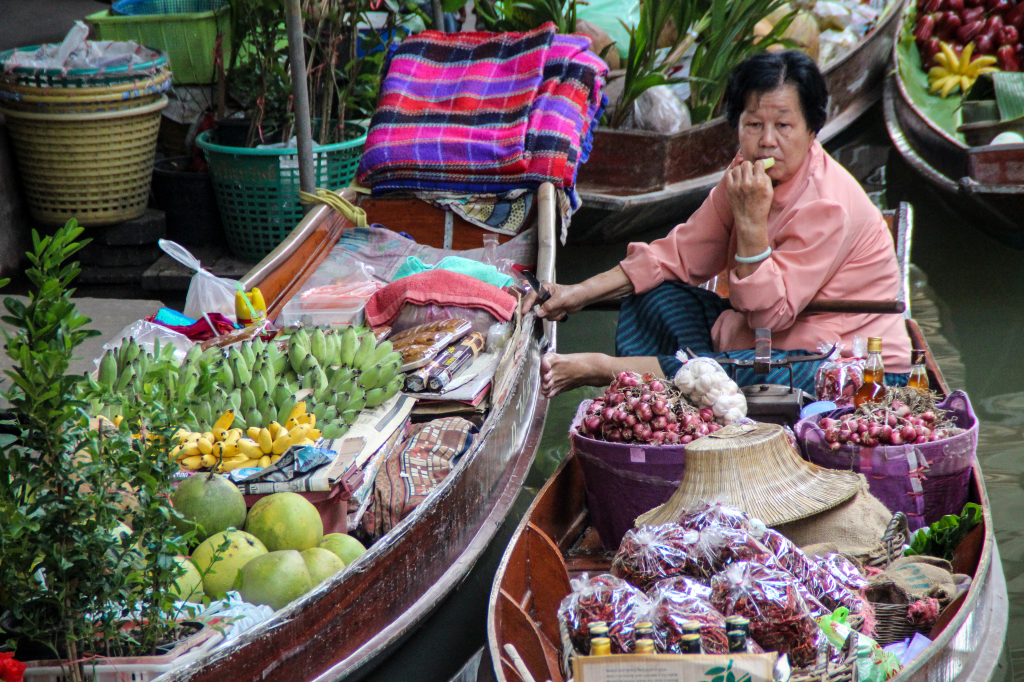
Vilasinee Sharp, a public relations officer for the Tourism Authority of Thailand, describes the market as a, “very old, traditional,” market, despite the strong tourism face it wears today. Its authenticity, according to Sharp, lies in its history. “It was the very first floating market of Thailand, the way of Thai living for a very long, long time. That is why this market is very popular.”
Domnoen Saduk Canal was developed over 100 years ago for transportation and irrigation for the region. The 32 km of canal were dug to connect the Mae Klong River and the Tachine River.
At that time, khlogs (canals) served as the center for economic activity and transportation. The Domnoen Saduak canal also became a source or irrigation for the predominantly agricultural area. Over 200 canals were dug off of the main canal, bringing water to the fertile soil, and leading to the successful production of fruits and vegetables famous throughout Thailand for their size and flavor.
According to Sharp, people traditionally built their homes along waterways and the floating market developed as a simple, natural means of exchanging goods. Farmers could easily load their produce directly onto boats, and use the canals to transport goods to the market.
The market itself was once a morning meeting place for farmers to buy and sell goods to one another, as well as to those who lived along the canals.
“Normally, we Thai people go to the market every morning to buy fresh stuff to cook. So that’s why, in the ancient times, they would buy the stuff and then go home to cook breakfast,” explains Sharp.
The market also supported those who lived along the waterways.
“Imagine you are a housewife, and you stay home, and your house is beside a river,” she describes a scenario typical in traditional Thai culture. “When you saw that boat coming–that sells chili, garlic, whatever– you see them paddling by your house and you say, ‘come, come, come! May I have garlic? May I have shallot? So convenient.”
A Changing Market
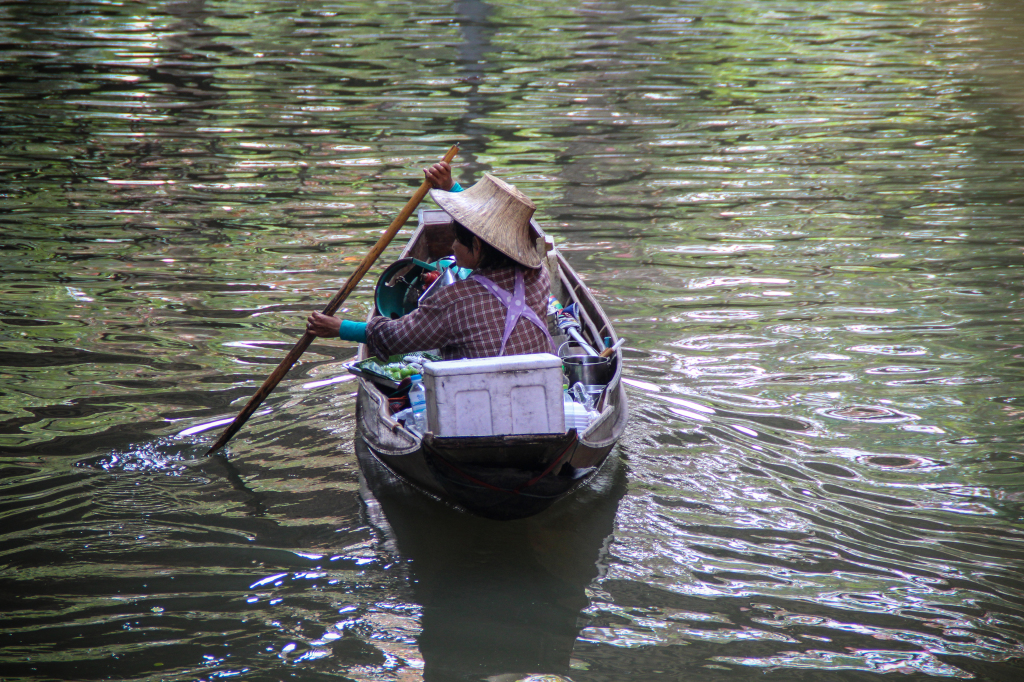
As Phui recognizes, with an increase of tourism in Thailand, the floating market has seen an increase in commercialization. Sharp describes the two faces the market wears: the authentic face, rooted in history, and the modern face, a commercial side targeting tourism.
The modern face has added elements to the market such as passenger long tail boats and boat services, charging steep fees to drive visitors along the canals. Boat vendors do not only specialize in produce now, but also include food service (noodles, spring rolls, meat skewers) and souvenir boats heaped with factory made hats, t-shirts, fans, and trinkets.
A ground market has also sprung up around the canals, where typical souvenir shops, restaurants, coffee shops, and message parlors can be found.
The second, more modern face, does not reflect the history of the market and has contributed to a negative image for many visitors. Many have labeled the market a, “tourist trap.”
In Phui’s corner of the market, however, the atmosphere is different. The vendors are mostly older in age, and seem to appreciate the social opportunities the market presents. Many locals come to buy produce from them, and they patiently hold their place and wait. They avoid the crowded canals, and refrain from shouting out their sales pitches.
“These are very nice people here, very kind people,” Sharp observes. She points out the various boats and the produce they women specialize in. This, she notes, is the authentic face of the market.
